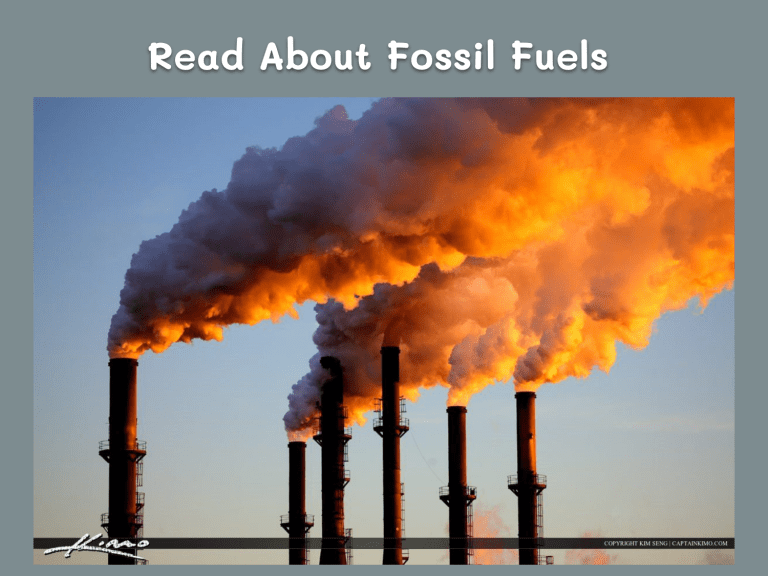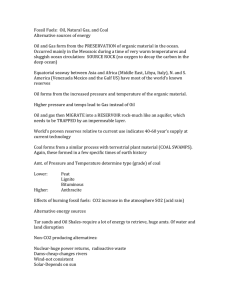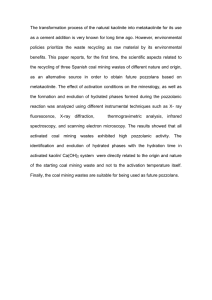
Read About Fossil Fuels OIL Crude oil, or petroleum (literally “rock oil” in Latin), is a liquid fossil fuel made up mostly of hydrocarbons (hydrogen and carbon compounds). Oil can be found in underground reservoirs; in the cracks, crevices, and pores of sedimentary rock; or in tar sands near the earth’s surface. It’s accessed by drilling, on land or at sea, or by strip mining in the case of tar sands oil and oil shale. Once extracted, oil is transported to refineries via supertanker, train, truck, or pipeline to be transformed into usable fuels such as gasoline, propane, kerosene, and jet fuel—as well as products such as plastics and paint. Coal (page 1 of 2) Coal is a solid, carbon-heavy rock that comes in four main varieties differentiated largely by carbon content: lignite, sub-bituminous, bituminous, and anthracite. Nearly all of the coal burned in the United States is sub-bituminous or bituminous. Found in abundance in states including Wyoming, West Virginia, Kentucky, and Pennsylvania, these coal types are middle of the pack in terms of carbon content and the heat energy they can produce. Regardless of variety, however, all coal is dirty. Indeed, in terms of emissions, it’s the most carbon-intensive fossil fuel we can burn. Coal (page 2 of 2) Coal is extracted via two methods: Underground mining uses heavy machinery to cut coal from deep underground deposits, while surface mining (also known as strip mining) removes entire layers of soil and rock to access coal deposits below. Strip mining accounts for about two-thirds of coal sourced in the United States. Although both forms of mining are detrimental to the environment, strip mining is particularly destructive, uprooting and polluting entire ecosystems. Natural Gas (page 1 of 2) Composed mostly of methane, natural gas is generally considered either conventional or unconventional, depending on where it’s found underground. Conventional natural gas is located in porous and permeable rock beds or mixed into oil reservoirs and can be accessed via standard drilling. Unconventional natural gas is essentially any form of gas that is too difficult or expensive to extract via regular drilling, requiring a special stimulation technique, such as fracking. Natural Gas (page 2 of 2) In the United States, the development and refinement of processes like fracking have helped make the country the world’s top producer of natural gas since 2009, and the biggest consumer of it, too. Abundant in the United States, natural gas covers nearly 30 percent of U.S. energy needs and is the largest source of energy for electricity. Forecasts suggest it will become an even greater part of the U.S. energy mix through 2050, threatening to exacerbate air and water pollution. Fracking



